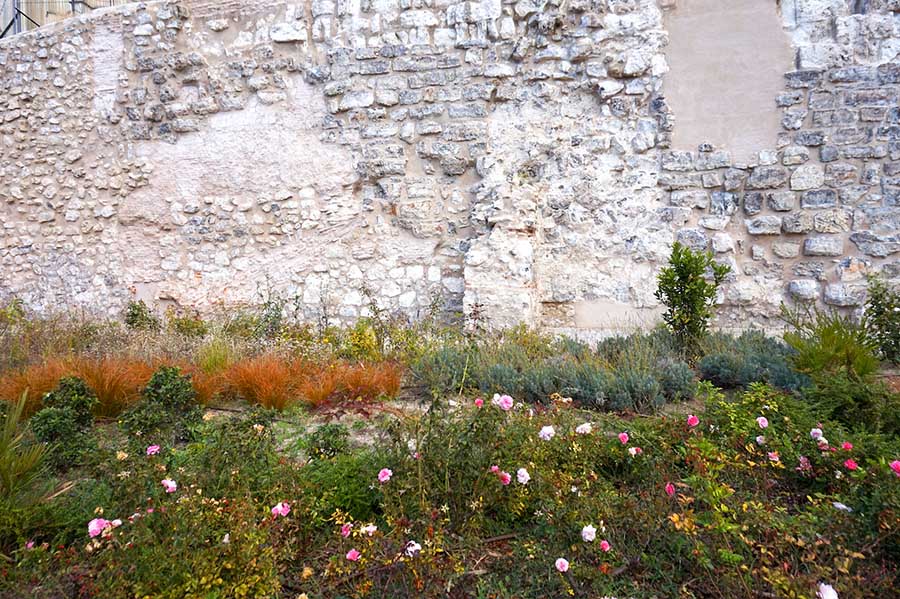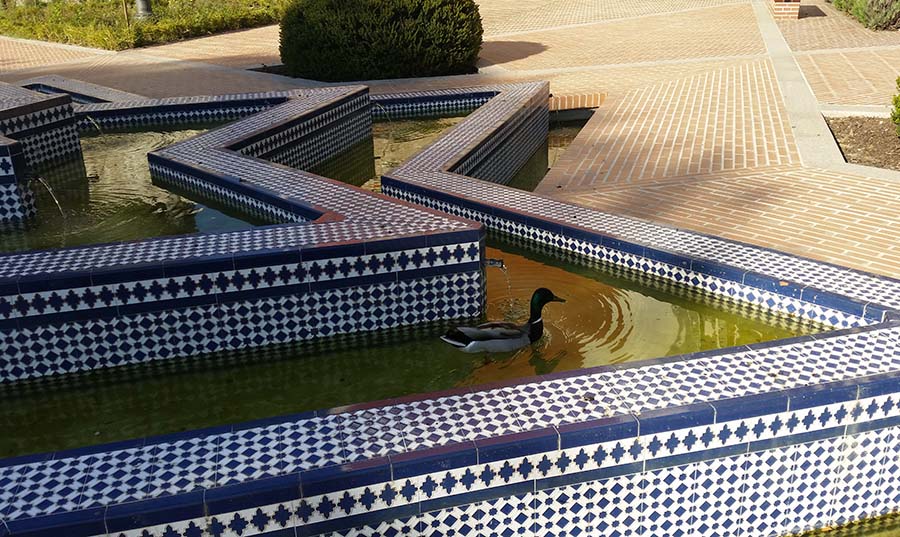
In the city of Madrid, there are parks that are well known by locals and tourists, such as El Retiro and El Capricho. However, there are others that go completely unnoticed and whose visit is well worth it. This is the case of the Emir Mohamed I park, an Andalusian-style Arab park in Madrid with beautiful green areas that can be visited on weekends and holidays from 10:00 a.m. to 9:00 p.m.
In 1954 the Arab wall was declared Historic-Artistic Heritage, although the archaeological work did not begin until much later. The first excavation campaign took place between 1972 and 1975. After the last excavation campaign, between 1987 and 1988, the area was abandoned.
Until 2010, what is now the Emir Mohamed I park, was just a plot of land. Between the years 2010 and 2011, the Madrid City Council rebuilt it as a park, giving the complex the shape of a star. The works were promoted by the Environment Area of the Madrid City Council and financed by the Plan E for Local Investment, of the Government of Spain.
In 2016, the Culture Area of the Madrid City Council began a project to promote the wall restoration project. The importance of this development lies in the fact that Madrid is the only capital of Arab-Islamic origin in Europe. Moreover, its name is a hybrid of Arabic and Romance: "Mayrit", which refers to the watercourses that run through the area where the Emir Mohamed I park is located.
The city of Mayrit was founded by the Emir Mohamed I between the years 853 and 865. It was born as a small town and a fortress on the hills of the Manzanares valley to keep an eye on the rebels of Toledo and defend the Middle March from Christian attacks.

The remains of the Islamic period are located mostly in the historic centre of Madrid, around the Almudena Cathedral, the Cuesta de la Vega, the Calle Mayor and the Palacio de Oriente, the Arab wall is, without doubt, the most remarkable and oldest, although remains of silos have also been preserved, as well as hydraulic structures. The techniques of capturing water brought from the East, the qanats, or underground channels, began to develop at this time and are the origin of the extensive network known as "water journeys", which supplied Madrid along long routes for centuries, until the construction of the Canal de Isabel II, and which are still partially preserved.
Already from a later period, various monuments survive in Madrid, both religious and civil, in the Mudejar style, built by Muslim master builders after the Christian conquest, which took place in 1083 by the troops of the King of Castile and León, Alfonso VI. Among them, the church of San Nicolás de Bari stands out, perhaps the oldest in the capital, as well as that of San Pedro el Viejo, both in the historic centre.

However, The Arab Park is located in the heart of Madrid, on the Cuesta de la Vega, on one of the sides of the Almudena Cathedral. The remains of the Islamic wall that delimit part of the park belong to the first walled enclosure of Madrid, which was rightfully declared a Historic Site in 1954.
One of the main attractions of the enclosure is the fountain in the shape of a six-pointed star. In addition, a parterre runs along the wall, and very old trees stand out in the green areas.
Without a doubt, the Emir Mohamed I Park is a highly recommended visit in Madrid.